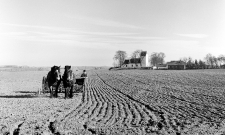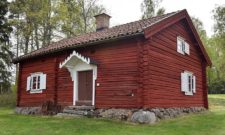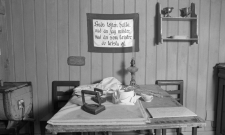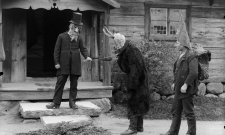Shop our historical maps

Mar
"The alternation between death and life, between darkness and light, between growth and withering never stops. All living things are doomed to die. The dead rises again." - Torgny Segerstedt, 3 April 1926
The great turning points of the annual race have marked for mankind the rhythm of the eternal duel between death and life. They have not only followed and observed the alternating victories of sun and darkness, heat and cold, but have felt themselves to be players in the drama. The feasts of midwinter and midsummer, of spring and sowing no less than of autumn and harvest, have given expression to the complicity which the children of mother earth feel with the life which emerges from her womb and, when it passes away, seeks refuge there again. The people did not sit in the gallery and watch the spectacle; they were and felt themselves to be fatefully bound up with that which timed the eternal cycle.
Early on, they portrayed in dramatic form the struggle between the forces of nature in which they participated. They imagined that in this way they could exchange their role as the plaything of these forces for that of co-determining ruler. When they appeared as the images of life and death, they took hold of them and were able to give their wrestling the outcome they desired. They did not represent, but embodied, the warming and life-giving power or the valley-like existence down in the bowels of the earth. The words spoken did not describe, but set in motion the powers spoken of. When the always active poetic imagination took hold of these antics, the presentation was shaped into a historical event. Once there was a glorious king's son, Who was torn to death by a mad boar, Buried and mourned, till women's tears urged him from the black mire again. In memory of the event, it was said, what had happened was dramatically portrayed ever since.
In Christianity, the tension of the drama increased. It was the only begotten Son of the living God who was killed, suffered the ignominious death of a criminal, and after two days in the shadowy halls of Hades, returned to earth and finally ascended to the halls of heaven. Stronger could not the contrasts be made, fiercer could not the drama's alternation be. Easter commemorated this event, which was decisive for the whole of God's creation. The Spring Festival was raised to a higher plane without changing its essence. The old strings continued to vibrate with the gloomy mood of Good Friday and the joyful message of Easter. The reawakening of nature, the sprouting of flowers from the ground, became a symbol of the event in history that had redeemed the race from the violence of death and sin. Nature and salvation mysticism were woven together.
Now the event has faded in its order to the image of the course of nature. But behind the reawakening of vegetation by sun and heat, the constant rebirth of other good powers is also glimpsed by all. Our human need to project the external and tangible into the world of ideas and thoughts is eternally unbearable. And isn't that basically true? Is not our existence one and unified? The life-giving powers are interrelated, the highest spiritual the same as the life-giving power of nature, seen only from a different point of view from that under which it appears in its second and somewhat coarser form. Frost and snow may drive away the life-force. Good thoughts and good intentions and the power to carry them into action sometimes wither and die in the icy cold. Neither can be permanently destroyed. Men become physically and spiritually repulsive, stinking and mean to those who look on with cold and clear eyes. They are helpless, miserable creatures, sobbing in fear of the darkness around them, and consumed with longing for the light, to those who look with warm eyes. They glide by like shadows in the storms of night, contourless, lifeless, coming out of nothing and disappearing into nothing. Their sorrow and anguish, their dream and will scattering without a trace in space. Yet their good intentions or beautiful thoughts are not destroyed. They are more fleeting than the breeze, more lasting than anything that seems to our minds the most solid of all solids. They rise again as surely as the sun returns and the plants spring again from the moss after winter's hibernation.
The world of men can become desolate and wintry and dead. Its creative forces, however, always regain control in time. The alternation between death and life, between darkness and light, between growth and withering, never ceases. All living things are doomed to die. The dead rises again. Through the individuals who have fallen into decay, the life of the family surges on; through the thoughts and wills of the individuals, the soul of the family makes its way towards horizons not yet seen. The essence of life is eternal rhythm.
Subscribe to YouTube:
If you appreciate Allmogens independent work to portray our fine Swedish history and Nordic culture, you are welcome to buy something nice in the shop or support us with a voluntary donation. Thank you in advance!
Support Allmogens via Swish: 123 258 97 29
Support Allmogens by becoming a member
Support Allmogens in your will








